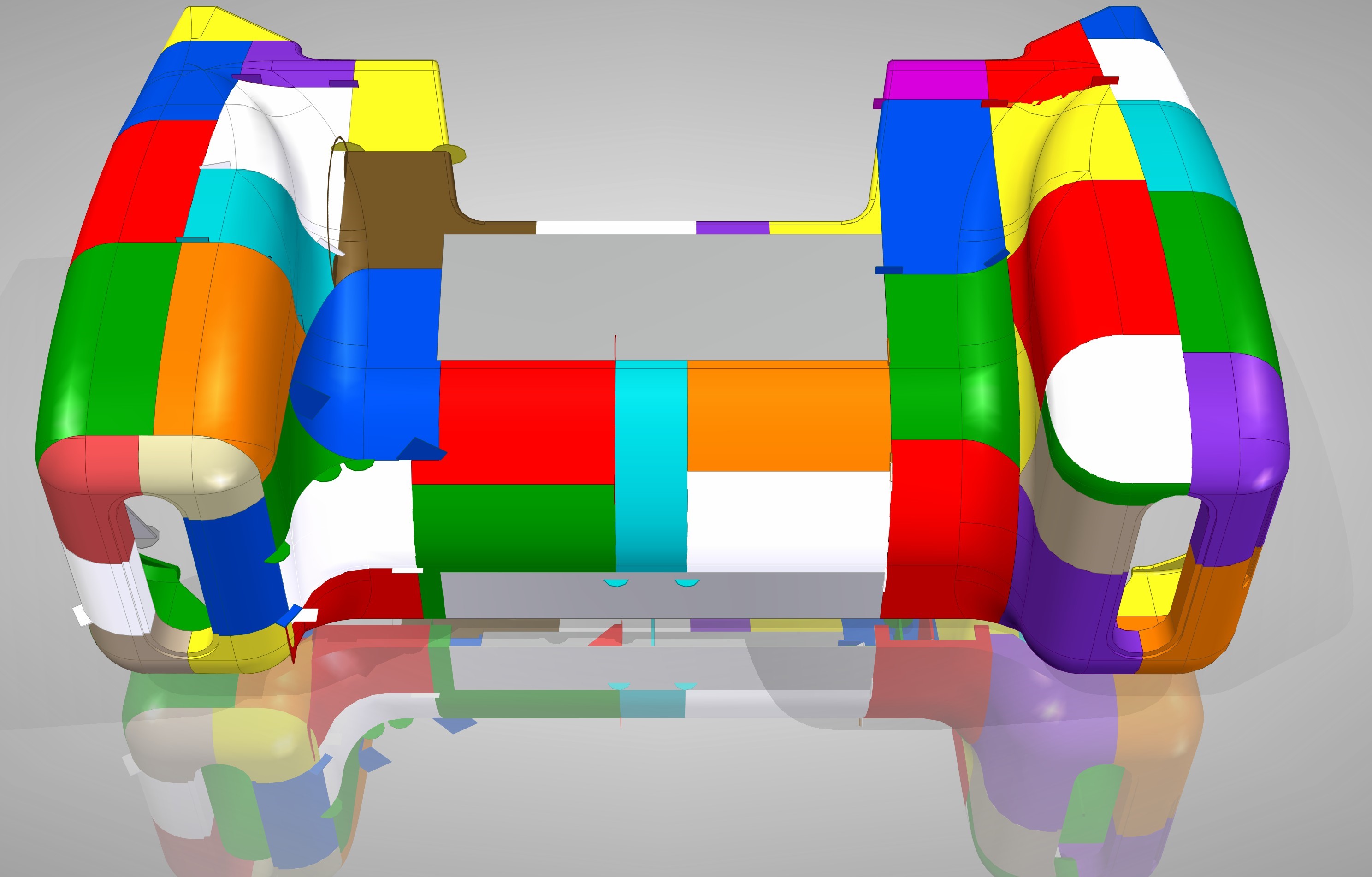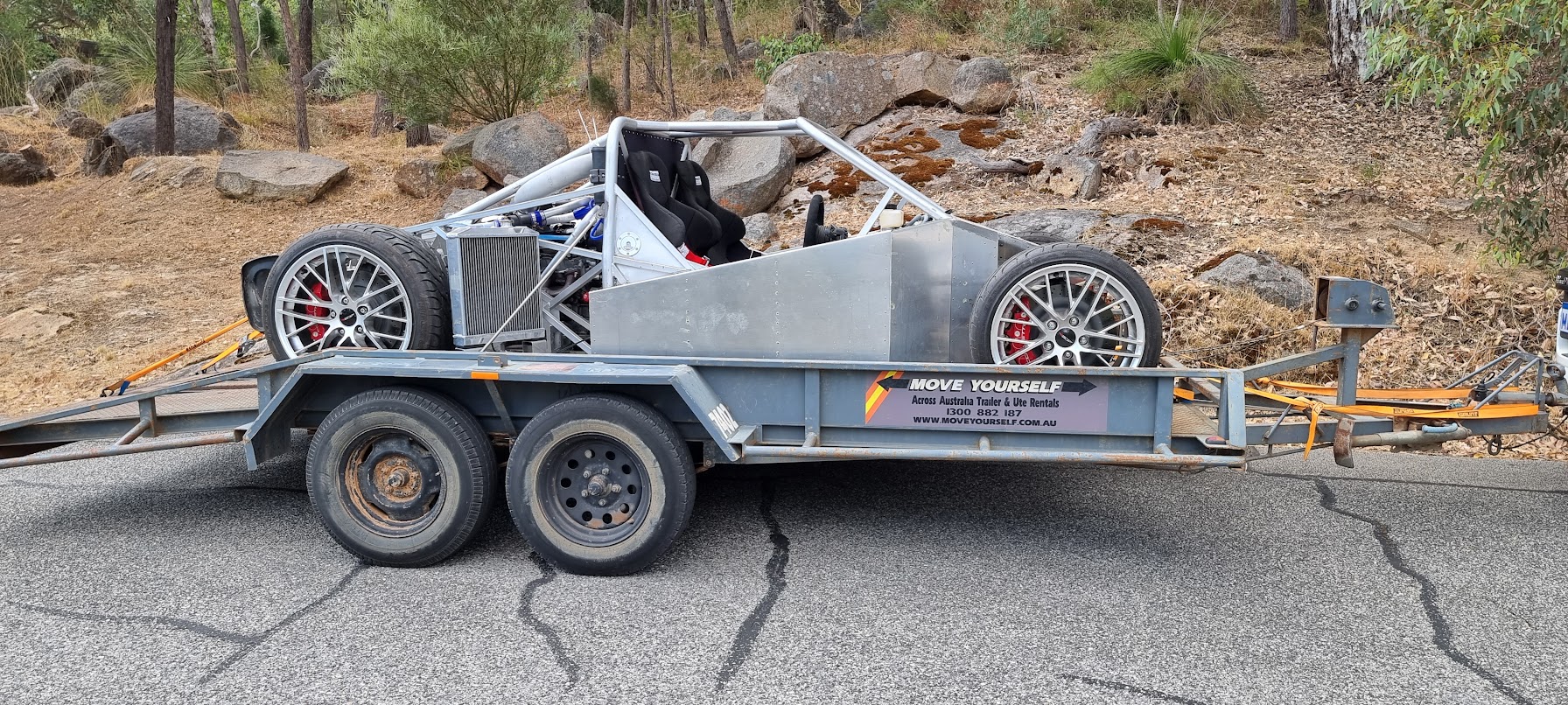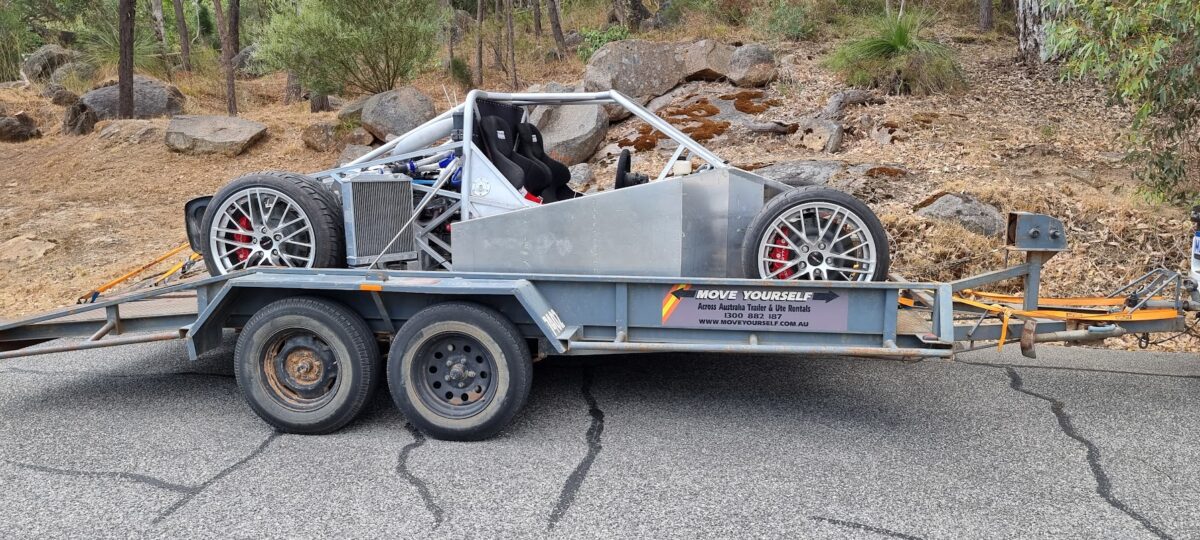28 March 2025. It’s been a while…
Time fly’s and it’s been a bit over 3 years without an update, which doesn’t mean nothing has been happening, just not much happening directly on the car, things are changing now so time for an update.
Not long after the last post we moved house (again). Which was great, we love where we’re at now, but it had no garage when we moved in just a car port, it took until the end of 2023 to get the garage sorted out as there’d been other things to do on the house before then. During this time the car was wrapped up waiting its turn.
The good thing about having to build the garage was the opportunity to practice my welding skills after not doing it much for 10 years, and to build mostly what I wanted rather than inheriting an established building.
Here’s the car being moved:
The people at the department of transport (shockingly) wouldn’t give me a temporary movement permit (I wonder why) so I couldn’t drive it there. There was less than 10mm to spare on either side on the trailer how it didn’t get damaged in the process is beyond me.
Getting on with it.
You may recall I’d 3D printed most of the front body work with the intension of using this to make molds for FRP parts. With the regular size 3D printer I had at the time this was going to mean over 50 parts, looking something like this:

Which while possible was always going to be very hard work, then when most of this work got destroyed during a house move it was time to start again.
So, with a regular size printer it was 52 parts, how many with a bigger printer? Obviously, a big enough machine could do it in one, but that is also impractical in my opinion at least to get the quality etc. I wanted from the parts. In the end I determined that a machine that could print a 600mm cube was the right sport for size versus part count. This brings it down to 12 parts for the front like this:
Sine 2015 when I’d started doing 3D printing things had moved along, Core XY was now a thing, much better components were available the Klipper firmware was invented and very importantly the range of filament types available is hugely improved over that time.
Big 3D Printer
So here’s the machine in nearly finished state:
Since this was taken, I started the process of enclosing the thing in sheet steel, for better printing and fire safety. The final volume dimensions are 635mm x 620mm x 610mm.
Note the welded steel tube frame, apart from being the cheapest way for me to go as this this is A$15 for a 2.4m length, I think the idea of using aluminium extrusion brackets and screws is just silly if you want to build a machine of this size that can do any sort of speed.
The MDF is now gone, but the collection power supplies remain the main motors are NEMA 23 rather than the normal NEMA 17 running at 48V as opposed to the more normal 24V. The bed is 1.5Kw 240V unit. The plate of spaghetti will be tidied up at some point.
There was a lot of learning to do during the construction and setup of this, a few broken parts too, but its going now. Here it is going through its startup routine.
As you can see, I think it’s fast enough once it gets going.
The other 3D Printer
The other 3D Printer
Whilst this was all going on I’d also got a Elegoo Neptune 4 Max to do more regular size things.
With that prototyping of the dash panels was started, it took a while to settle on a theme for the design, but the direction for it is settled now, here’s some early parts:
Next was remaking the engine inlet tube, the steel tube used previously had to go, so a thin printed mandrel was made to wind basalt tape around:
As usual with this stuff I made a sticky mess. There’s more to add but I’ll do that in another post, sooner than 3 years from now.

